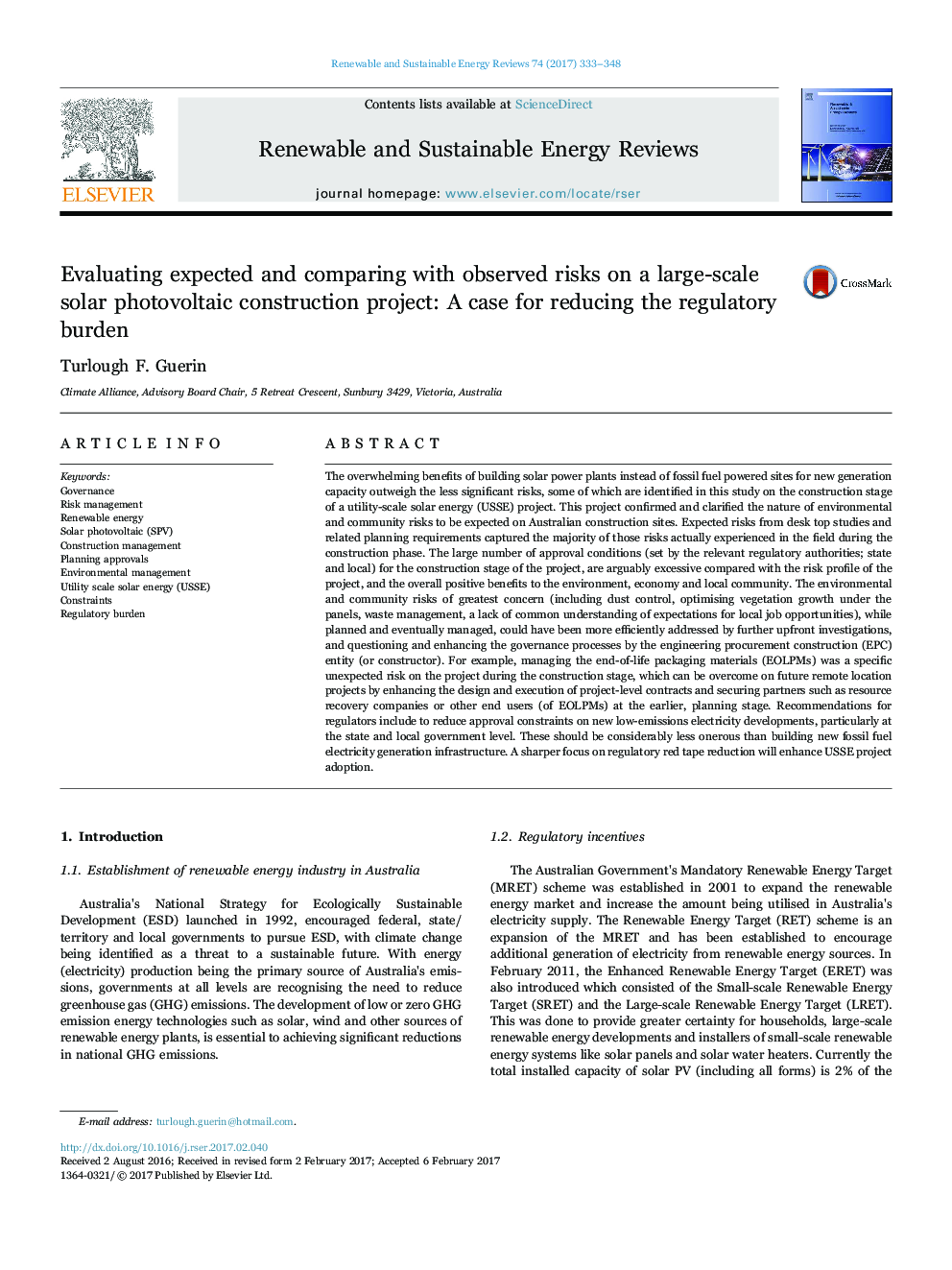| کد مقاله | کد نشریه | سال انتشار | مقاله انگلیسی | نسخه تمام متن |
|---|---|---|---|---|
| 5483126 | 1522312 | 2017 | 16 صفحه PDF | دانلود رایگان |
عنوان انگلیسی مقاله ISI
Evaluating expected and comparing with observed risks on a large-scale solar photovoltaic construction project: A case for reducing the regulatory burden
ترجمه فارسی عنوان
ارزیابی انتظارات و مقایسه با خطرات مشاهده شده در یک طرح بزرگ ساختمانی فتوولتائیک خورشیدی: مورد برای کاهش بار نظارتی
دانلود مقاله + سفارش ترجمه
دانلود مقاله ISI انگلیسی
رایگان برای ایرانیان
کلمات کلیدی
موضوعات مرتبط
مهندسی و علوم پایه
مهندسی انرژی
انرژی های تجدید پذیر، توسعه پایدار و محیط زیست
چکیده انگلیسی
The overwhelming benefits of building solar power plants instead of fossil fuel powered sites for new generation capacity outweigh the less significant risks, some of which are identified in this study on the construction stage of a utility-scale solar energy (USSE) project. This project confirmed and clarified the nature of environmental and community risks to be expected on Australian construction sites. Expected risks from desk top studies and related planning requirements captured the majority of those risks actually experienced in the field during the construction phase. The large number of approval conditions (set by the relevant regulatory authorities; state and local) for the construction stage of the project, are arguably excessive compared with the risk profile of the project, and the overall positive benefits to the environment, economy and local community. The environmental and community risks of greatest concern (including dust control, optimising vegetation growth under the panels, waste management, a lack of common understanding of expectations for local job opportunities), while planned and eventually managed, could have been more efficiently addressed by further upfront investigations, and questioning and enhancing the governance processes by the engineering procurement construction (EPC) entity (or constructor). For example, managing the end-of-life packaging materials (EOLPMs) was a specific unexpected risk on the project during the construction stage, which can be overcome on future remote location projects by enhancing the design and execution of project-level contracts and securing partners such as resource recovery companies or other end users (of EOLPMs) at the earlier, planning stage. Recommendations for regulators include to reduce approval constraints on new low-emissions electricity developments, particularly at the state and local government level. These should be considerably less onerous than building new fossil fuel electricity generation infrastructure. A sharper focus on regulatory red tape reduction will enhance USSE project adoption.
ناشر
Database: Elsevier - ScienceDirect (ساینس دایرکت)
Journal: Renewable and Sustainable Energy Reviews - Volume 74, July 2017, Pages 333-348
Journal: Renewable and Sustainable Energy Reviews - Volume 74, July 2017, Pages 333-348
نویسندگان
Turlough F. Guerin,
